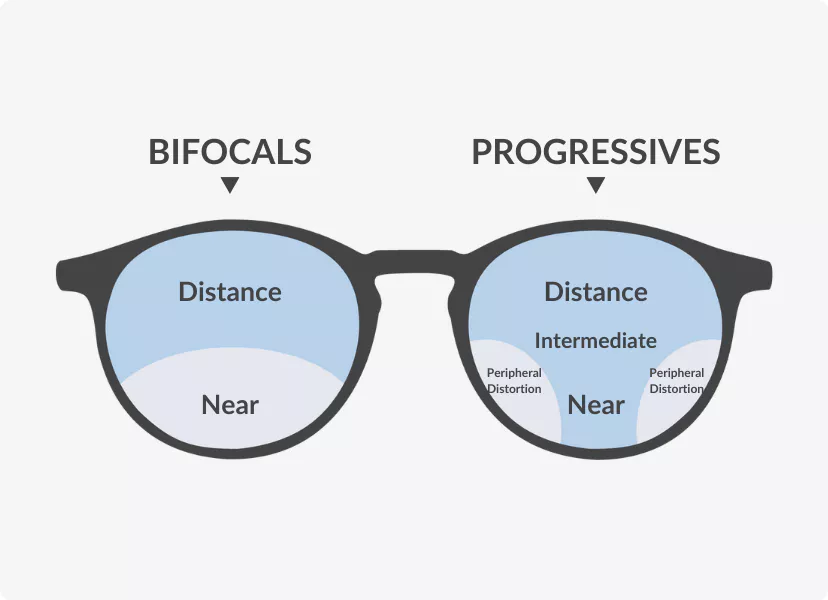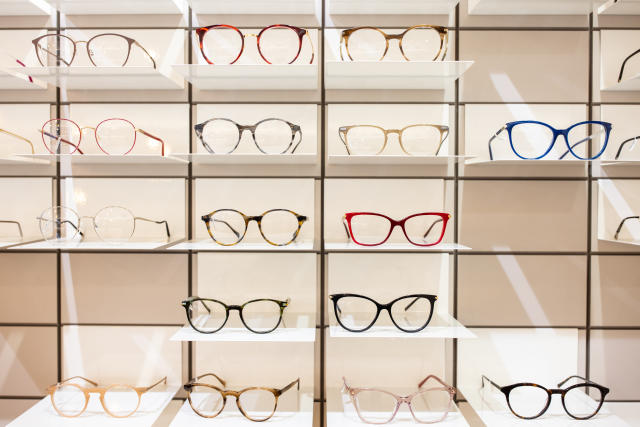
Everything About Progressive Lenses
Progressive lenses have revolutionized the eyewear industry by offering a seamless solution for people who need vision correction for more than one distance. Unlike traditional bifocals or trifocals, progressive lenses provide a smooth transition between near, intermediate, and distance vision—all without visible lines. But as great as they are, they’re not for everyone, and they do come with a learning curve. If you’re considering switching to progressives or simply curious about how they work, this comprehensive guide will walk you through everything you need to know.
What is the downside of progressive lenses?
Let’s start with the not-so-glamorous side of progressives. While they offer a sleek, line-free appearance and multiple vision fields in one lens, they’re not without their challenges.
1. Adaptation period: The biggest downside is the initial adjustment phase. Many first-time wearers report dizziness, blurry peripheral vision, or a “swim effect,” where objects appear to move unnaturally. This is due to the way progressive lenses blend different prescriptions across the lens surface.
2. Cost: Progressive lenses are typically more expensive than single-vision or bifocal lenses. This is because of the advanced design and precise customization required for each wearer.
3. Narrow reading zone: Some users find the reading area a bit restricted, especially in standard progressive designs. Premium lenses offer wider corridors but come with a higher price tag.
4. Frame limitations: Not every frame is compatible with progressives. Very small or shallow frames might not provide enough vertical space for all three vision zones to work effectively.
Despite these drawbacks, most people find that the benefits far outweigh the inconveniences—especially after the adaptation period.
Are you supposed to wear progressive lenses all the time?
This is a very common question—and the short answer is: it depends on your lifestyle and visual needs.
If you rely on vision correction for multiple distances (say, you’re nearsighted and also need help with close-up tasks like reading), wearing your progressive lenses full-time is generally recommended. Consistent use helps your eyes and brain adjust more quickly to the lenses’ unique design.
However, there are exceptions:
- If you’re doing intense close-up work for extended periods (like detailed drawing or crafting), a pair of dedicated reading glasses might be more comfortable.
- If you’re highly active outdoors, you might prefer switching to prescription sunglasses or sports glasses.
That said, most wearers find that progressive lenses are ideal for daily, all-day wear, as they eliminate the need to switch between multiple pairs of glasses.

What are the three levels of progressive lenses?
Progressive lenses come in different tiers, often categorized by quality, customization, and field of view. Let’s break it down:
1. Standard (Basic) Progressives:
These are entry-level lenses that use a general template for the lens design. While they are more affordable, they may have narrower visual zones and more peripheral distortion.
2. Premium (Digital or Freeform) Progressives:
These are custom-made using digital surface technology to match the wearer’s exact prescription, frame, and even head posture. The result? Sharper vision and wider intermediate and reading areas.
3. Personalized/Individualized Progressives:
These are top-tier lenses crafted with highly detailed measurements—including eye rotation center, pupil distance, frame tilt, and even how you read or work. They provide maximum comfort, minimal distortion, and the smoothest transition between zones.
Investing in higher-tier progressives often translates into faster adaptation, clearer vision, and better long-term satisfaction.
Who is not a good candidate for progressive lenses?
While progressive lenses suit a wide range of users, they aren’t ideal for everyone.
1. Individuals with balance issues or vertigo:
Because of the peripheral distortion during movement, those with motion sensitivity may find progressives uncomfortable or even disorienting.
2. People who need a wide reading field:
Writers, editors, or anyone who spends hours focused on text may find the reading zone too narrow. In such cases, separate reading glasses or computer lenses are more practical.
3. Children or teens:
Progressives are designed primarily for presbyopia, a condition related to aging eyes. Younger people typically don’t need the multi-zone correction that progressives provide.
4. Patients with very high prescriptions or unusual eye conditions:
Extreme prescriptions can make progressive lenses less effective or require highly specialized lens designs.
If you’re unsure whether progressives are right for you, your optician can run tests and recommend the best solution for your visual habits.
What are the common complaints for first wearers of multifocal lenses?
Even the best-designed progressive lenses require a bit of patience at the beginning. Here are the most common complaints new users report:
- Blurry side vision: Because of the way the lenses transition between prescriptions, peripheral areas can appear distorted.
- Difficulty judging distances: Navigating stairs or curbs may feel awkward at first.
- Eye strain or headaches: Usually a result of overcorrecting or tilting the head in ways your eyes aren’t used to.
- Nausea or dizziness: Some people describe a “rollercoaster” sensation during the first few days.
- Reading issues: It can take time to locate the sweet spot for reading, especially in standard lenses.
The good news? Most of these issues disappear within one to two weeks of regular wear. And remember, wearing them consistently accelerates the adjustment process.
Finally
Progressive lenses are an incredible innovation for people with presbyopia or multifocal vision needs. They eliminate the hassle of switching between different pairs of glasses and offer a streamlined, modern look. While there may be a learning curve, especially in the first days, most users find that once they adapt, they can’t imagine going back.



